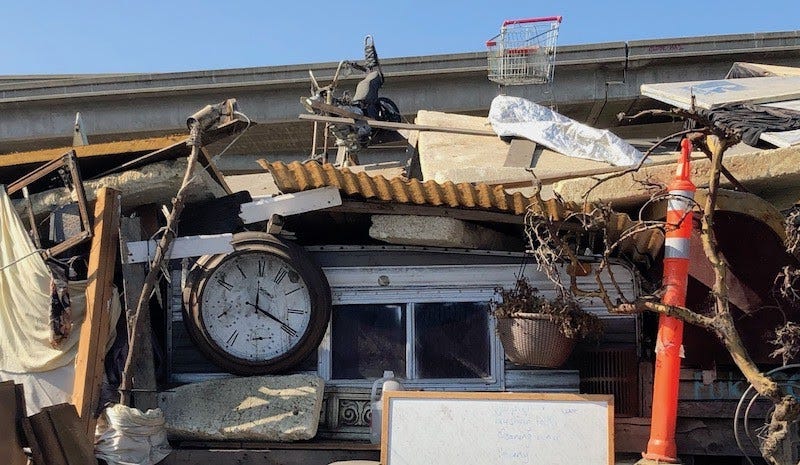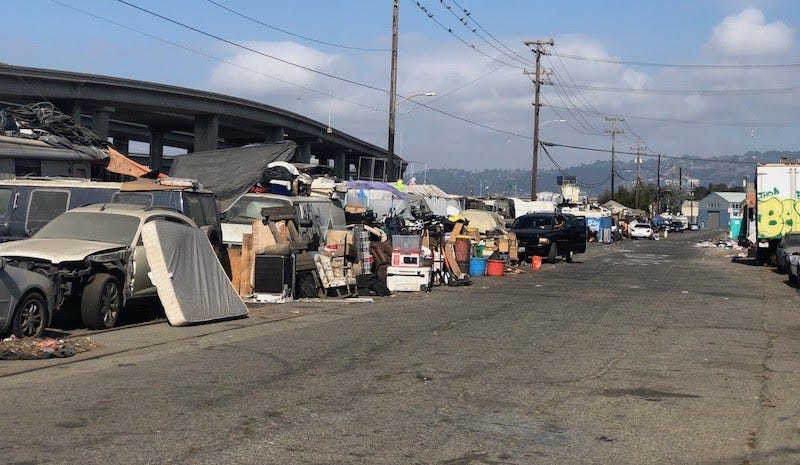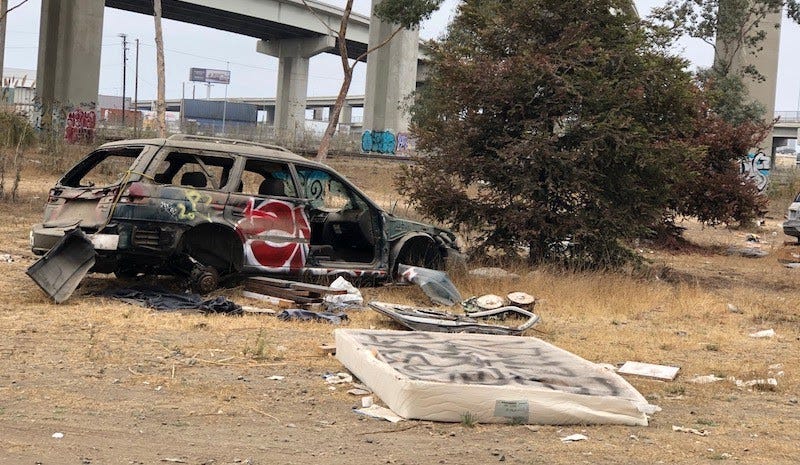
One of the biggest issues in California is homelessness. But can someone actually experiencing the crisis of homelessness — someone without a fixed address in the state — cast their vote?
Yes, they can. But it’s not easy.
When it comes to voting by mail, especially popular this year during the pandemic, homeless people face difficulty. That’s because if you are going to vote by mail, you need an address where the registrar of voters can send your ballot.
People living in California with no street address can ask a service organization, such as a homeless shelter, to receive mail containing their ballots for them. But there’s no guarantee that they’ll agree to that or that it won’t get lost in the shuffle. In Alameda County’s case, it allowed those using its Project Roomkey hotels (which are housing people during the pandemic) as mailing addresses for their ballots, according to Alameda County’s Health Care Services Agency’s Grants Manager David Modersbach.
Sign up for The Bold Italic newsletter to get the best of the Bay Area in your inbox every week.
In other cases, Californians without fixed street addresses can pick the option “I do not have a street address” on their voter registration form, and just list an intersection in the city and county in which they live. They then have to physically go to an “accessible voting location” to vote, where their ballot is printed out for them.
California voters who missed the October 19 voter registration deadline can show up to a polling place on Election Day, register on the spot, and fill out a provisional ballot. The registrar of voters just has to verify their identities and takes some time after the vote to do so. People showing up to vote in Alameda County can provide their Social Security number as a form of identity verification.
Of course, another challenge is the time and effort it takes to go through these steps — and often, life is stressful and busy enough on the streets. They often also don’t know that they’re eligible to vote or have to make the extra effort to find out where exactly they can cast their ballot.
It appears not much outreach is done to help homeless residents vote. Alameda County’s Healthcare Services Agency did conduct a drive at the homeless shelters and service agencies, such as the Alameda County Community Food Bank in September. However, when I asked Tina Harvey, a homeless woman who lives in West Oakland’s Wood Street encampment, whether anyone had been by her encampment to register voters or help them find out where to cast their ballots, she told me that no one had.
Then there’s the question of learning what is on the ballot. In past years, volunteers from nonprofit organizations such as the League of Women Voters might have stopped by encampments in person to give nonpartisan presentations about measures and candidates. This year, some of those presentations took place on Zoom instead. That might have presented a problem for those living in encampments with no consistent access to electricity now that cafés and libraries are closed. One homeless person told the homeless advocacy newspaper Street Spirit that they didn’t know what was on the ballot because they don’t have access to a TV or the internet.
I started thinking about this issue as I was helping KALW conduct research into what’s on local voters’ minds, emailing and calling people in West Oakland where there’s some of the lowest voter turnout in the Bay Area.

Homelessness in the Bay Area, and what local politicians plan on doing about it, is the top issue for many. It’s an issue for both housed and unhoused residents of Oakland. But with various proposals on the ballot designed to help solve the crisis, I wondered how some of the homeless felt about the measures.
Estimates for the number of people experiencing homelessness in Alameda County range, but start at around 8,000. About half of them live in Oakland. Around the Bay Area, that number is just under 30,000, according to the Bay Area Council. Statewide, the number balloons to 150,000, according to a report from the U.S. Department of Housing and Urban Development. (Others think that’s an underestimate.)
So I set out to explore whether unhoused people are engaging on the issues affecting homelessness on the ballot.

First, I visited the Wood Street encampment in West Oakland. I tagged along with some activists from the United Front Against Displacement, which is trying to build a community and political force among the homeless tenants.
(I was really struck by how the group had stepped in where local government officials had not — at least not in a way that the people living there wanted them to. For example, they’d built the residents of this encampment a shower.)

Before Election Day, I spoke with about five residents around the Wood Street encampment, and every single one of them had either already voted or planned to.
Among several of the issues on the ballot that affect the homeless in Oakland is Alameda County’s Measure W. It’s a proposal to raise the county’s sales tax by half a percent for 10 years, and use the revenue to fund programs for the county’s homeless population. That would bring the sales tax to 9.75% in Oakland alone.
“Diane Jackson,” using a pseudonym, said that she is against Alameda’s Measure W.
“When this other money is given to all these different agencies and bureaucracies, they’re able to do what they want to do with the money. And most of the time, it does not get in the people’s hands who need it,” she said.
Many homelessness activists — including the United Front Against Displacement — also oppose the proposal.
“The problem is, you can’t actually trust any of these local agencies to actually use the money on people,” Dayton Andrews, one of the leaders of the United Front Against Displacement told me.
In addition, since it’s a sales tax, it’s regressive, meaning that it would most hurt the poor, working-class, and homeless communities. Andrews pointed out that millions have been poured into efforts to help the homeless in recent years. But the number of homeless has only increased.
Needa Bee, a homeless advocate in Oakland, was even more strident:
“This government is never going to take care of us. It never has from its inception. It has never taken care of Native and Black and Brown people and that’s who the homeless are in Oakland. They’re Native, Black, and Brown…and Indigenous people. This government has never taken care of us. It has never had our best interest. It was designed to destroy us.”

Talya Husbands-Hankin, founder of the community group Love and Justice in the Streets, for her part, told me that engaging in the political process is crucial. She pointed to the city council’s recent vote to restrict the location of the homeless encampments as an example. Activists like her are frustrated by the slow movement of local government officials and the shallow way they treat the homeless as a political football.

Voting takes time and effort — and, yes, a plan. Like some other homeless people, Harvey has her ballot mailed to a relative. In this case, it’s mailed to her father’s house in San Pablo.
“Ever since I was of legal age to vote, I’ve been voting. They’re gonna follow through or not, one way or another, but at least my opinions can be heard,” she says.








